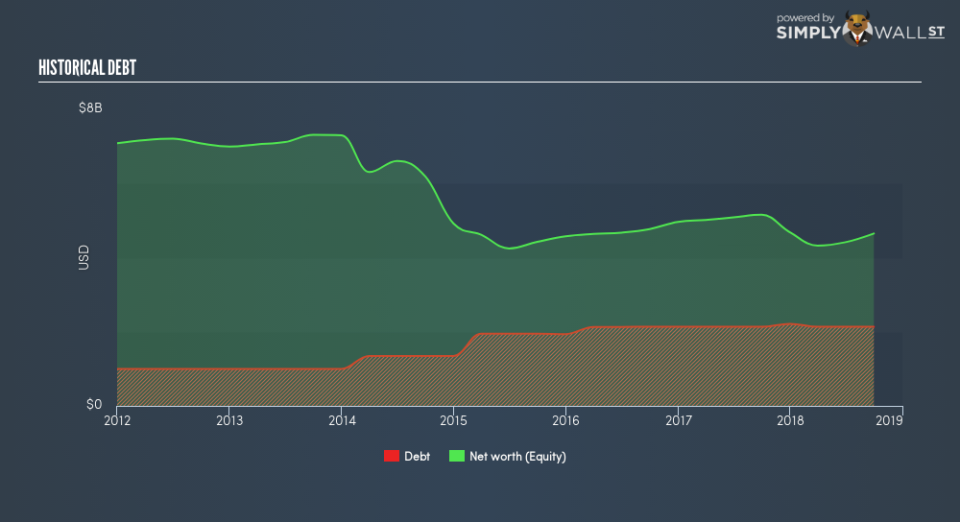Does Juniper Networks, Inc.’s (NYSE:JNPR) Debt Level Pose A Problem?

Small and large cap stocks are widely popular for a variety of reasons, however, mid-cap companies such as Juniper Networks, Inc. (NYSE:JNPR), with a market cap of US$9.3b, often get neglected by retail investors. Despite this, commonly overlooked mid-caps have historically produced better risk-adjusted returns than their small and large-cap counterparts. Today we will look at JNPR’s financial liquidity and debt levels, which are strong indicators for whether the company can weather economic downturns or fund strategic acquisitions for future growth. Note that this information is centred entirely on financial health and is a top-level understanding, so I encourage you to look further into JNPR here.
View our latest analysis for Juniper Networks
Does JNPR produce enough cash relative to debt?
JNPR’s debt level has been constant at around US$2.1b over the previous year including long-term debt. At this constant level of debt, JNPR’s cash and short-term investments stands at US$3.4b , ready to deploy into the business. Moreover, JNPR has generated cash from operations of US$862m over the same time period, resulting in an operating cash to total debt ratio of 40%, meaning that JNPR’s debt is appropriately covered by operating cash. This ratio can also be a sign of operational efficiency as an alternative to return on assets. In JNPR’s case, it is able to generate 0.4x cash from its debt capital.
Does JNPR’s liquid assets cover its short-term commitments?
At the current liabilities level of US$1.7b, it seems that the business has been able to meet these commitments with a current assets level of US$4.3b, leading to a 2.47x current account ratio. Generally, for Communications companies, this is a reasonable ratio since there’s a sufficient cash cushion without leaving too much capital idle or in low-earning investments.
Can JNPR service its debt comfortably?
With debt reaching 46% of equity, JNPR may be thought of as relatively highly levered. This is not uncommon for a mid-cap company given that debt tends to be lower-cost and at times, more accessible. We can test if JNPR’s debt levels are sustainable by measuring interest payments against earnings of a company. Ideally, earnings before interest and tax (EBIT) should cover net interest by at least three times. For JNPR, the ratio of 16.8x suggests that interest is comfortably covered, which means that lenders may be inclined to lend more money to the company, as it is seen as safe in terms of payback.
Next Steps:
Although JNPR’s debt level is towards the higher end of the spectrum, its cash flow coverage seems adequate to meet obligations which means its debt is being efficiently utilised. Since there is also no concerns around JNPR’s liquidity needs, this may be its optimal capital structure for the time being. I admit this is a fairly basic analysis for JNPR’s financial health. Other important fundamentals need to be considered alongside. I suggest you continue to research Juniper Networks to get a better picture of the mid-cap by looking at:
Future Outlook: What are well-informed industry analysts predicting for JNPR’s future growth? Take a look at our free research report of analyst consensus for JNPR’s outlook.
Valuation: What is JNPR worth today? Is the stock undervalued, even when its growth outlook is factored into its intrinsic value? The intrinsic value infographic in our free research report helps visualize whether JNPR is currently mispriced by the market.
Other High-Performing Stocks: Are there other stocks that provide better prospects with proven track records? Explore our free list of these great stocks here.
To help readers see past the short term volatility of the financial market, we aim to bring you a long-term focused research analysis purely driven by fundamental data. Note that our analysis does not factor in the latest price-sensitive company announcements.
The author is an independent contributor and at the time of publication had no position in the stocks mentioned. For errors that warrant correction please contact the editor at editorial-team@simplywallst.com.

